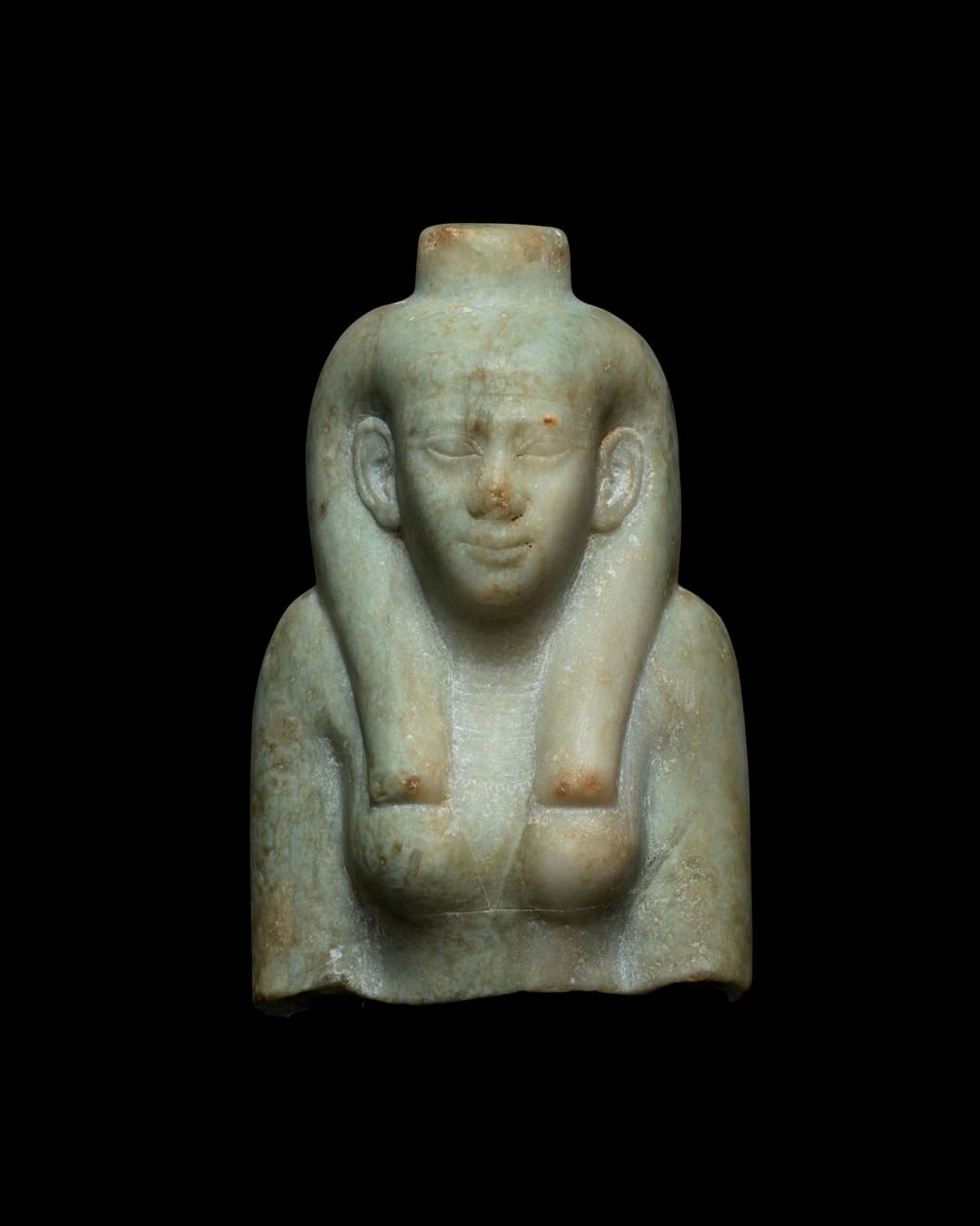Egyptian
Provenance
With Merton Simpson, New York, 1978
With Galerie Nefer, Zurich, acquired from the above
Private collection, SwitzerlandExhibitions
On Loan: Antikenmuseum Basel & Sammlung Ludwig, 1998 - 2022Literature
The archaising style of the sculpture and her facial features indicates a 25th Dynasty date, when Egypt was ruled by Nubian (Kushite) kings from modern day Sudan. The kingdom of Kush rivalled and at times overtook Egypt. From around 1500 BC, Egypt’s New Kingdom pharaohs conquered Kush, bringing Egyptian culture and religion into Nubia. By the 11th century BC however, with the end of the New Kingdom, Egypt retreated, and in its place, a new dynasty of Kushite kings rose in the city of Napata. From about 725 BC the kings of Napata invaded Egypt and ruled as its 25th Dynasty, restoring the old Egyptian traditions and presenting themselves as pharaohs.
The Kushite pharaohs built and restored many monuments in Egypt and Nubia; the artistic style of the period was archaising, as in this ophicalcite example which harks back to the sculpture of the Middle Kingdom, looking back at Egypt’s earlier great ages to build a visual narrative of traditional power structures.
An important aspect of this narrative was characterised by a more distinctive form of feminine authority: the appointment of a Kushite royal daughter as the God’s Wife of Amun—effectively the high priestess in Thebes—beginning with Kashta’s daughter Amenirdis I. Representations of female power became more prevalent. Alongside this was the increasing importance of certain great goddesses, in particular those designated “Eye of Re,” including Hathor, Mut-Sakhmet-Bastet, Tefnut, Wadjet, and even Isis. These violent but powerful goddesses, when appeased, were forceful protectors and benefactors of the king and humankind. Representations of such deities became increasingly common in bronze, stone and in small scale faience.
For a similar upper part of a female figure in ophicalcite, also dated to the 25th - 26th Dynasty, see S. Schoske and D. Wildung, Gott und Götter im Alten Ägypten, Mainz, 1993, p. 56, no. 35. For a related 21st-22nd Dynasty Egyptian Blue statue of a goddess with a similar headdress over which a crown would have fitted, see A. Wiese, Antikenmuseum Basel und Sammlung Ludwig, Die Ägyptische Abteilung, Mainz, 2001, p. 152, no. 108; also the Metropolitan Museum of Art, New York, acc. no. 2021.41.91.
